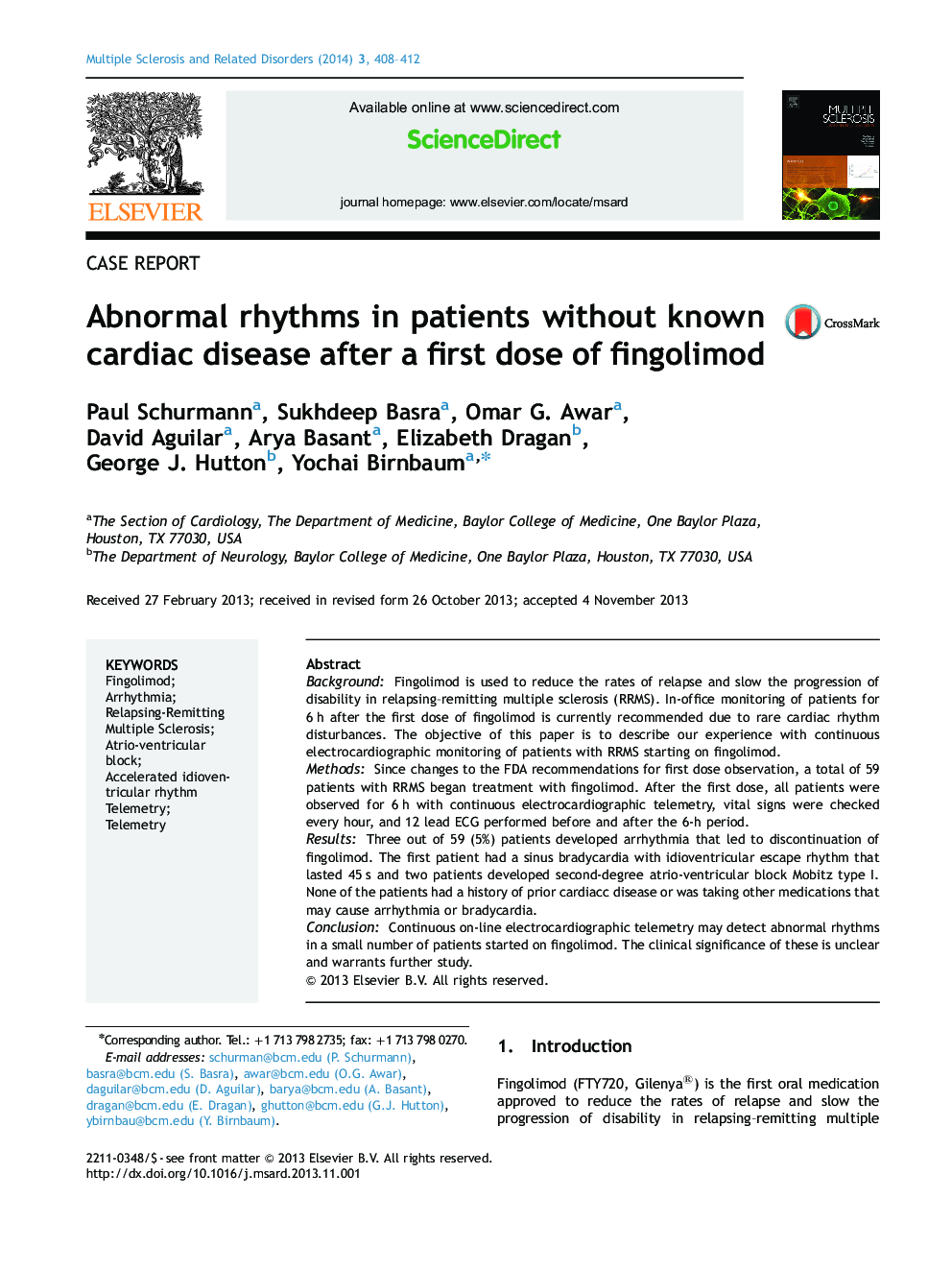| Article ID | Journal | Published Year | Pages | File Type |
|---|---|---|---|---|
| 5912380 | Multiple Sclerosis and Related Disorders | 2014 | 5 Pages |
\â¢Familiarize physicians with arrhythmias associated with the use of fingolimod.â¢Describe a new type of arrhythmia associated with the use of fingolimod.â¢Review FDA recommendations for monitoring patients starting fingolimod.â¢Propose a new method for monitoring patients regardless of cardiac risk factors.
BackgroundFingolimod is used to reduce the rates of relapse and slow the progression of disability in relapsing-remitting multiple sclerosis (RRMS). In-office monitoring of patients for 6Â h after the first dose of fingolimod is currently recommended due to rare cardiac rhythm disturbances. The objective of this paper is to describe our experience with continuous electrocardiographic monitoring of patients with RRMS starting on fingolimod.MethodsSince changes to the FDA recommendations for first dose observation, a total of 59 patients with RRMS began treatment with fingolimod. After the first dose, all patients were observed for 6Â h with continuous electrocardiographic telemetry, vital signs were checked every hour, and 12 lead ECG performed before and after the 6-h period.ResultsThree out of 59 (5%) patients developed arrhythmia that led to discontinuation of fingolimod. The first patient had a sinus bradycardia with idioventricular escape rhythm that lasted 45Â s and two patients developed second-degree atrio-ventricular block Mobitz type I. None of the patients had a history of prior cardiacc disease or was taking other medications that may cause arrhythmia or bradycardia.ConclusionContinuous on-line electrocardiographic telemetry may detect abnormal rhythms in a small number of patients started on fingolimod. The clinical significance of these is unclear and warrants further study.
